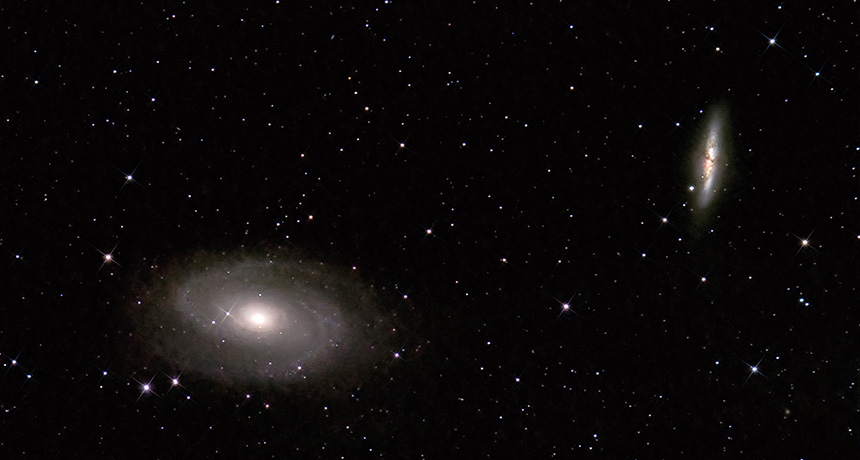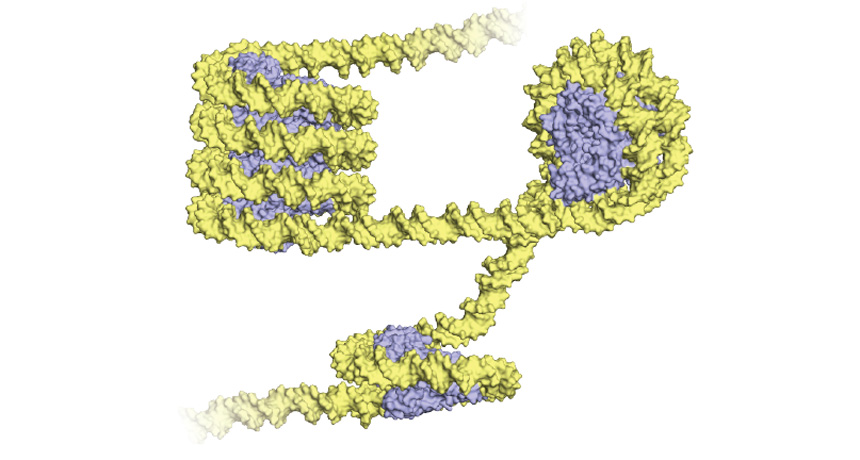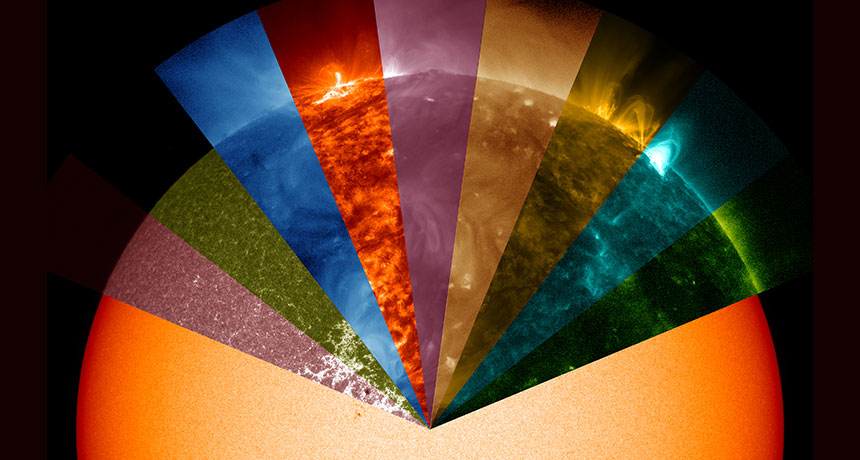Half of the Milky Way comes from other galaxies

Galaxies may grow by swiping gas from their neighbors.
New simulations suggest that nearly half the matter in the Milky Way may have been siphoned from the gas of other galaxies. That gas provides the raw material that galaxies use to build their bulk. The finding, scheduled to appear in the Monthly Notices of the Royal Astronomical Society, reveals a new, unexpected way for galaxies to acquire matter and could give clues to how they evolve.
“These simulations show a huge amount of interaction among galaxies, a huge dance that’s going on,” says astronomer Romeel Davé of the University of Edinburgh. That dance, and the subsequent exchange of atoms, could be what establishes a galaxy’s character — whether it’s small or big, elliptical or spiral, quiet or bursting with star formation. If the simulation results are confirmed with observations, it could be a major advancement in understanding galaxy formation, Davé says.
It makes sense that much of the material in one galaxy actually came from other galaxies, says study coauthor Claude-André Faucher-Giguère, a theoretical astrophysicist at Northwestern University in Evanston, Ill. “Still, the result was really unexpected,” he says.
Astronomers thought galaxies got their matter in two main ways. First, atoms clumped together to form stars and then galaxies, not long after the Big Bang about 13.8 billion years ago. Then some of those atoms were eventually ejected by supernovas but rained back onto the same galaxy, recycling the gas again and again.
The new simulations showed a third way galaxies could score gas. Powerful supernova explosions would eject atoms, in the form of gas, far from their home galaxies into intergalactic space. Those atoms would then travel through space, pushed toward other galaxies by galactic winds that move at several hundred kilometers per second. When the particles neared a galaxy’s gravitational pull, they would get sucked in, where they would serve as the basis for stars, planets, dust and other material in their new galactic home. Still, this exchange of atoms is extremely difficult to spot in space because the gas atoms, don’t give off light like stars do.
Faucher-Giguère and colleagues spotted the exchange in computer simulations that show how galaxies formed just after the Big Bang and how they have evolved over time. The team tracked gas atoms as they moved through the model universe, formed stars and then were ejected from galaxies as those stars exploded.
In the simulations, up to half of the atoms in large galaxies were pulled in from other galaxies. Because more massive galaxies have more gravity, they tended to pull atoms from the ejected material of small galaxies. The exchange appears to take billions of years as atoms travel the vast space between galaxies, the team notes.
“It’s that not surprising to see a galaxy kick out matter, which is then pulled in by other galaxies,” Davé says. What is surprising, he says, is the amount of material that’s transferred. Before seeing the simulations, he would have guessed that about 5 percent of gas was transferred among galaxies this way. “To see that it is up to 50 percent is pretty remarkable,” he says.
Already, astronomers are searching for evidence of this material-swapping behavior among galaxies. Faucher-Giguère and colleagues, working with researchers using the Hubble Space Telescope, hope to observe intergalactic transfer of gas among galaxies soon.

